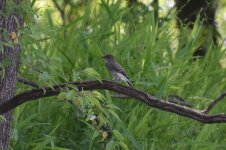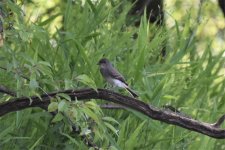hamlinjk15u
Well-known member

For the record, before posting, I took a lot more time looking through my Sibley and Stokes field guides. I have found many that seem to come close (Gray, Willow, Acadian, potentially Least, maybe even Eastern Wood Pewee) but the main thing that keeps throwing off any of those IDs is the full gray chest and belly. Hoping someone can help with this ID.
Photo taken 20 June 2021 in Nashville, TN
Photo taken 20 June 2021 in Nashville, TN






